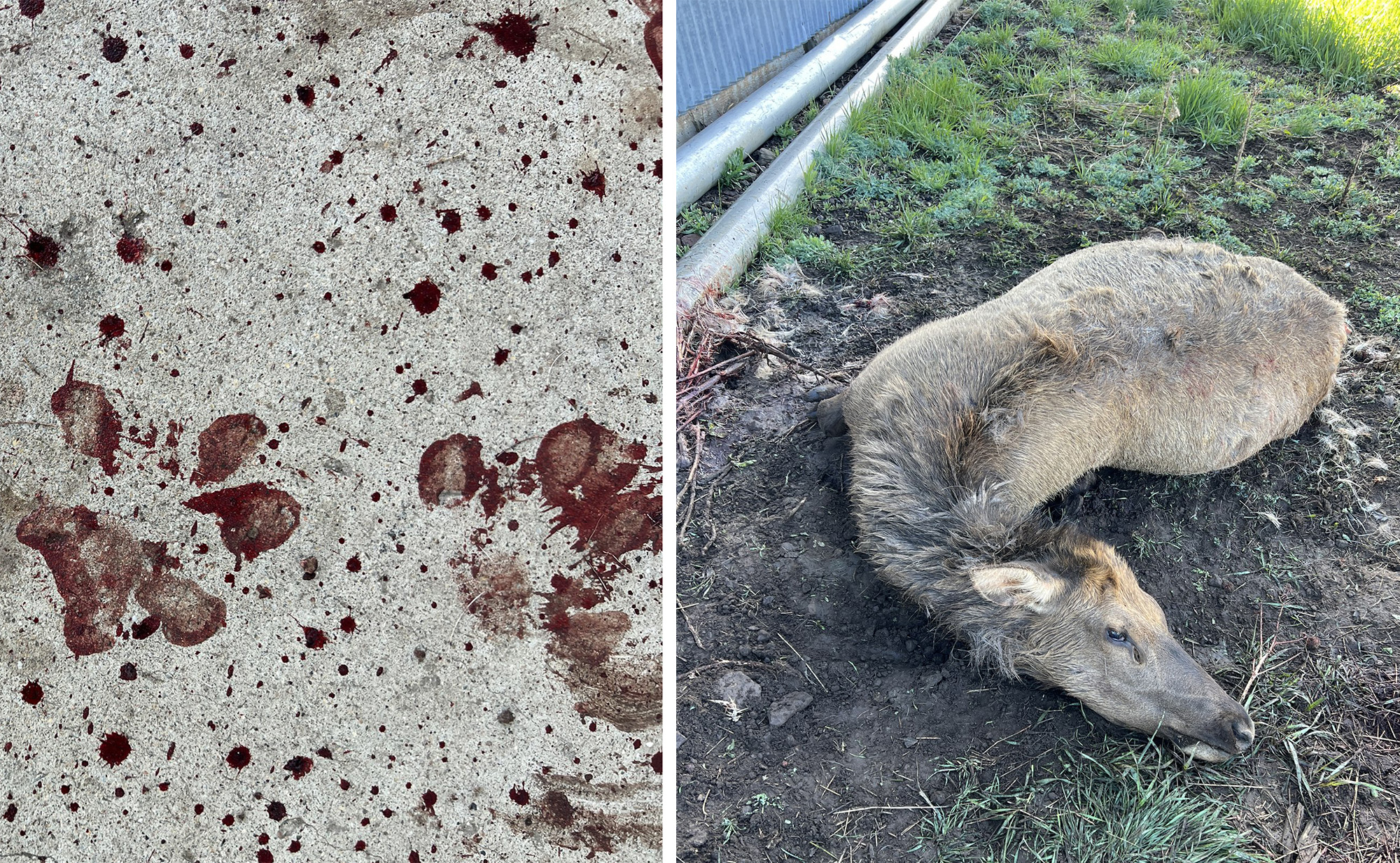California County ‘Under Siege’ from Gray Wolves

At least 18 confirmed wolf “attacks” of livestock and big game have occurred this month in Sierra Valley, California according to the Sierra County Sheriff’s Office. Although no humans have been injured, law enforcement officials are describing the situation as a serious threat to public safety that cannot be managed by nonlethal hazing efforts alone.
“Over the past 28 days, ranchers and residents in Sierra Valley have been under siege from escalating gray wolf activity,” the law enforcement agency wrote Monday in a social media post. “While the presence of wolves in the valley is not new, this spring has seen a dramatic increase in attacks.”
While “attacks” suggests humans were involved, the agency is instead referencing multiple cattle depredations and wolves hunting deer and elk near residences. Sierra County lies between the Plumas and Tahoe national forests just west of Reno. It’s the second-least populated county in California. But when it comes to wolves, the region is home to the Diamond and Beyem Seyo wolfpacks.
“The incidents began early this month with six calves attacked and wounded. This was quickly followed by two additional calves that were attacked so severely they had to be euthanized.. During a visit by Sacramento news media to one of the affected ranches, two wolves were observed and recorded in broad daylight among cows and calves. Although efforts were made to haze the wolves from the pasture, they returned within an hour and attacked two more calves. Since then, DS Ranches have reported three additional calf attacks resulting in either death or euthanasia … Beyond the DS Ranch incidents, a ranch just north reported three calves, and one cow killed, while a ranch just south reported one cow attacked.”
The Sheriff’s Office stressed that current nonlethal hazing efforts aren’t cutting it for stockgrowers and residents.
“One particularly concerning incident involved a calf killed while California Department of Fish and Wildlife (CDFW) game wardens were actively patrolling the property,” the Sheriff’s Office noted. “This highlights the inefficiency of current hazing policies, which are impractical for large-scale ranching operations.”
The two incidents that seem to amplify law enforcement’s concerns for human safety have occurred not on ranches, but closer to home.
“On Saturday night, following the Loyalton Fire Department’s Spaghetti Feed at the Sierra Brooks lodge, the Sierra County Sheriff’s Office received a 911 call around 11:00 p.m., reporting a suspected wolf attack on a deer in a resident’s side yard, just 100 yards from the Sierra Brooks Lodge. Deputies responded, but the suspected wolf had fled. As deputies approached, the severely injured deer stood up and fled into nearby brush. While the witness reported extensive injuries consistent with a wolf attack, deputies were unable to euthanize the deer to obtain DNA confirmation. The Sheriff’s Office is awaiting confirmation from CDFW that the tracks located in the yard are wolf.”
The following night, a resident awoke to what sounded like an attempted burglary. Instead, two wolves had reportedly chased a cow elk onto his doorstep.
On Monday “at approximately 7:30 a.m., Sheriff Mike Fisher received a call from a local resident reporting that his son had discovered evidence of an animal attack on their front porch around 12:30 a.m.,” the sheriff’s office wrote. “The resident provided photographs showing bloody wolf tracks on the porch. Sheriff Fisher coordinated with CDFW and responded to the scene. Upon investigation, it was determined that at least two wolves were involved in the attack. It is believed that an elk, while being chased by the wolves, ended up at the residence’s doorstep before ultimately being taken down and killed approximately 50 yards from the house.”
The hunt left smeared blood all over the house and bloody paw prints on the front porch.
Despite the Sheriff Department’s claims of affected domestic and wild animals in the last month, however, CDFW has not yet reported any of its April investigations on its website. There have been no confirmed wolf depredations for Sierra County in 2025 yet according to the investigations the agency has made public, which cover through March. (Note, however, that the Sierra Valley covers a larger area than Sierra County.)
And while CDFW conducted hundreds of livestock depredation investigations across the state in recent years, the agency confirmed just one wolf kill for Sierra County in 2024. Genetic testing confirmed a wolf killed a calf on public land there in late July. Wolves range well beyond county lines, however, and other wolf kills were confirmed nearby.
One explanation for the sudden surge in wolf activity in Sierra County is the nature of wolf behavior: Wolves regularly range beyond their established territory.
“In October 2024, the collared female in the Beyem Seyo pack (LAS23F) shifted her area of activity significantly, moving south into Sierra County,” the CDFW reported in its latest wolf management update. “Her collar remained active, and she began using portions of what were previously reported as the Beckwourth and Antelope pack areas. Multiple wolves continued to be detected in the historical Beyem Seyo pack area after the collared female’s departure.”
Read Next: ‘The Situation Is Not Tolerable.’ New Mexico County Declares State of Emergency Over Mexican Wolves Killing Livestock, Pets
Gray wolves naturally returned to California in 2011, according to the CDFW. The predators remain classified as endangered species under both state and federal law.
“The suspected wolf attack [of a deer] in Sierra Brooks, combined with the confirmed elk attack just feet from a residence, underscores a growing and alarming trend: these wolves are demonstrating very little fear of humans and are moving closer and closer into our residential areas and communities. This escalating behavior represents a serious public safety concern that cannot be ignored by the California Department of Fish and Wildlife.”
Read the full article here









